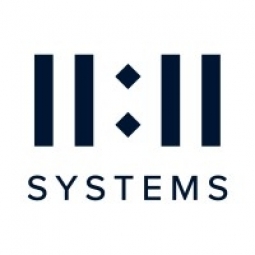公司规模
Large Corporate
地区
- America
- Asia
- Europe
- Pacific
国家
- Australia
- Netherlands
- Singapore
- United Kingdom
- United States
产品
- Veeam
- [11:11] Systems
技术栈
- Cloud Storage
- Virtual Machines
实施规模
- Enterprise-wide Deployment
影响指标
- Cost Savings
- Productivity Improvements
技术
- 基础设施即服务 (IaaS) - 云计算
- 基础设施即服务 (IaaS) - 云存储服务
适用行业
- 零售
适用功能
- 离散制造
- 物流运输
服务
- 云规划/设计/实施服务
- 数据科学服务
关于客户
Jurlique is a global skincare company that operates in various regions around the world, including Asia, the U.S., and the U.K. The company has a significant IT infrastructure that supports its operations, including remote offices and a datacenter. Jurlique's IT infrastructure includes virtual machines (VMs), workloads, and files, which require regular backups. The company was looking for a solution that could provide a consolidated view of its cloud and storage of VMs, workloads, and files.
挑战
Jurlique, a global skincare company, was facing challenges with managing backups at its remote offices and datacenter. The company was looking for a solution that could provide a consolidated view of its cloud and storage of VMs, workloads, and files. The company also required a solution that could support its operations in various regions around the world, including Asia, the U.S., and the U.K. Furthermore, Jurlique wanted a flexible pricing model to manage a configurable, collective pool of servers to adapt to fluctuating workloads.
解决方案
Jurlique chose to consolidate its storage with Veeam and [11:11] Systems. Veeam manages backups at Jurlique's remote offices and datacenter, while [11:11] provides secondary backup in the cloud. Together, these solutions provide Jurlique with a single consolidated view of its cloud and storage of VMs, workloads, and files. [11:11] operates nine data centers around the world, including locations in Singapore, Melbourne, Sydney, Los Angeles, Dallas, Washington, D.C, London, Manchester, and Amsterdam. This global presence supports Jurlique's operations in Asia and helps the company reach new markets in the U.S. and U.K. [11:11] also provides a flexible pricing model for Jurlique to manage a configurable, collective pool of servers to allocate and reallocate to adapt to fluctuating workloads.
运营影响

Case Study missing?
Start adding your own!
Register with your work email and create a new case study profile for your business.
相关案例.

Case Study
Improving Production Line Efficiency with Ethernet Micro RTU Controller
Moxa was asked to provide a connectivity solution for one of the world's leading cosmetics companies. This multinational corporation, with retail presence in 130 countries, 23 global braches, and over 66,000 employees, sought to improve the efficiency of their production process by migrating from manual monitoring to an automatic productivity monitoring system. The production line was being monitored by ABB Real-TPI, a factory information system that offers data collection and analysis to improve plant efficiency. Due to software limitations, the customer needed an OPC server and a corresponding I/O solution to collect data from additional sensor devices for the Real-TPI system. The goal is to enable the factory information system to more thoroughly collect data from every corner of the production line. This will improve its ability to measure Overall Equipment Effectiveness (OEE) and translate into increased production efficiencies. System Requirements • Instant status updates while still consuming minimal bandwidth to relieve strain on limited factory networks • Interoperable with ABB Real-TPI • Small form factor appropriate for deployment where space is scarce • Remote software management and configuration to simplify operations

Case Study
How Sirqul’s IoT Platform is Crafting Carrefour’s New In-Store Experiences
Carrefour Taiwan’s goal is to be completely digital by end of 2018. Out-dated manual methods for analysis and assumptions limited Carrefour’s ability to change the customer experience and were void of real-time decision-making capabilities. Rather than relying solely on sales data, assumptions, and disparate systems, Carrefour Taiwan’s CEO led an initiative to find a connected IoT solution that could give the team the ability to make real-time changes and more informed decisions. Prior to implementing, Carrefour struggled to address their conversion rates and did not have the proper insights into the customer decision-making process nor how to make an immediate impact without losing customer confidence.

Case Study
Digital Retail Security Solutions
Sennco wanted to help its retail customers increase sales and profits by developing an innovative alarm system as opposed to conventional connected alarms that are permanently tethered to display products. These traditional security systems were cumbersome and intrusive to the customer shopping experience. Additionally, they provided no useful data or analytics.

Case Study
Ensures Cold Milk in Your Supermarket
As of 2014, AK-Centralen has over 1,500 Danish supermarkets equipped, and utilizes 16 operators, and is open 24 hours a day, 365 days a year. AK-Centralen needed the ability to monitor the cooling alarms from around the country, 24 hours a day, 365 days a year. Each and every time the door to a milk cooler or a freezer does not close properly, an alarm goes off on a computer screen in a control building in southwestern Odense. This type of alarm will go off approximately 140,000 times per year, equating to roughly 400 alarms in a 24-hour period. Should an alarm go off, then there is only a limited amount of time to act before dairy products or frozen pizza must be disposed of, and this type of waste can quickly start to cost a supermarket a great deal of money.

Case Study
Supermarket Energy Savings
The client had previously deployed a one-meter-per-store monitoring program. Given the manner in which energy consumption changes with external temperature, hour of the day, day of week and month of year, a single meter solution lacked the ability to detect the difference between a true problem and a changing store environment. Most importantly, a single meter solution could never identify root cause of energy consumption changes. This approach never reduced the number of truck-rolls or man-hours required to find and resolve issues.




